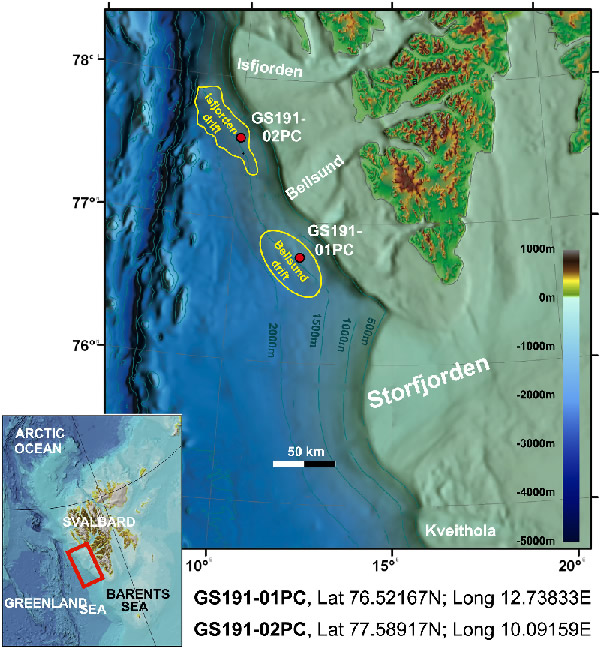A High‐Resolution Geomagnetic Relative Paleointensity Record From the Arctic Ocean Deep‐Water Gateway Deposits During the Last 60 kyr

Caricchi C., R. Giulia Lucchi, L. Sagnotti, P. Macrì, A. Di Roberto, P. Del Carlo, K. Husum, J. Sverre Laberg, C. Morigi (2019).
Geochemistry, Geophysics, Geosystems, https://doi.org/10.1029/2018GC007955.
Abstract
We present a paleomagnetic and rock magnetic data set from two long sediment cores collected from Bellsund and Isfjorden contourite drifts located on the eastern side of the Fram Strait (western Spitsbergen margin). The data set gave the opportunity to define the behavior of the past geomagnetic field at high latitude and to constrain the palaeoclimatic events that occurred in a time framework spanning marine isotope stage 3 to the Holocene. A high‐resolution age model was reconstructed by coupling 26 radiocarbon ages and high‐resolution relative paleointensity and paleosecular variation of the geomagnetic field records for the last 60 kyr. We show the variation of the geomagnetic field at high latitudes, pointing out variability during periods of regular paleosecular variation (normal polarity) as well as during the most recent geomagnetic excursions, and we provide a high‐resolution record of the Laschamps excursion. Cross‐cores correlation allowed us to outline major, climate‐related, sedimentary changes in the analyzed stratigraphic sequence that includes the meltwater events MWP‐1a and MWP‐19ky, and the Heinrich‐like events H1, H2, H4, and H6. This contribution confirms that rock magnetic and paleomagnetic analysis can be successfully used as a correlation and dating tool for sedimentary successions at high latitudes, where accelerator mass spectrometry dates and oxygen isotope analyses are often difficult to obtain for the scarcity of calcareous microfossils and the uncertainties related to data calibration may be significant, as well as the complexity of water mass characteristics and dynamics through climate changes.


Devi effettuare l'accesso per postare un commento.